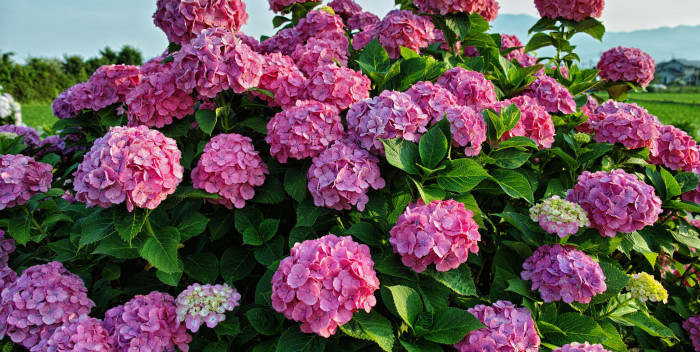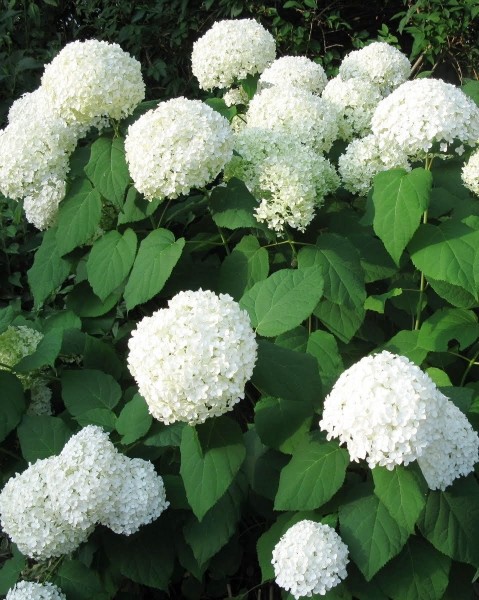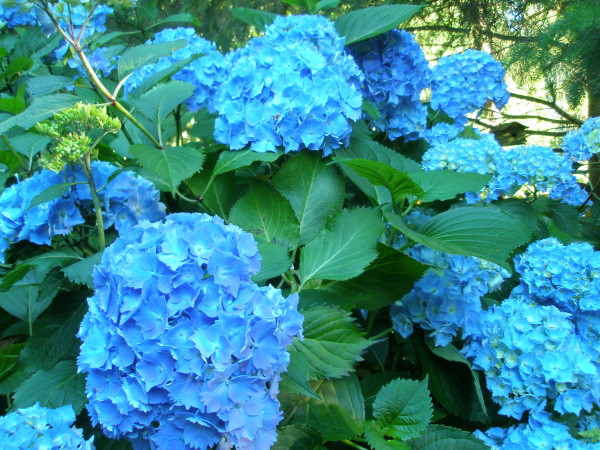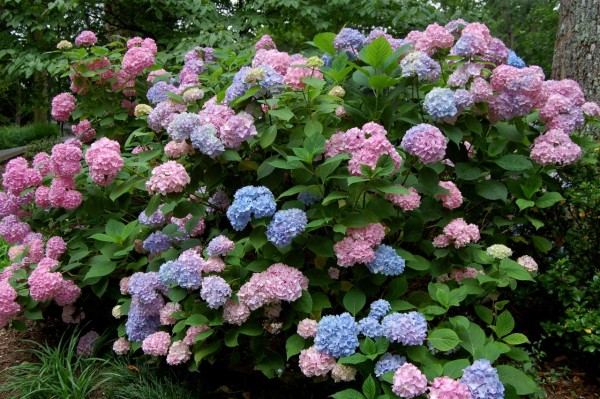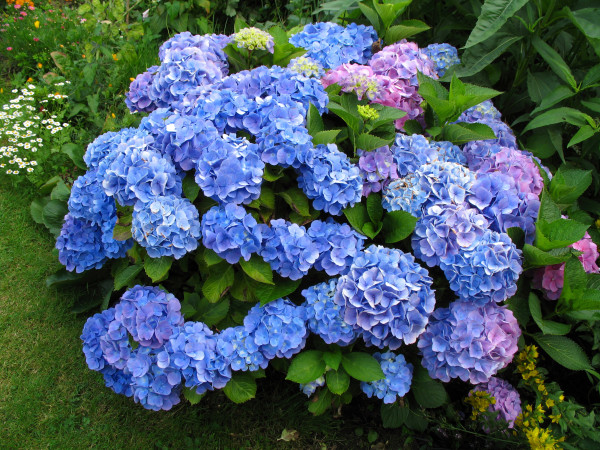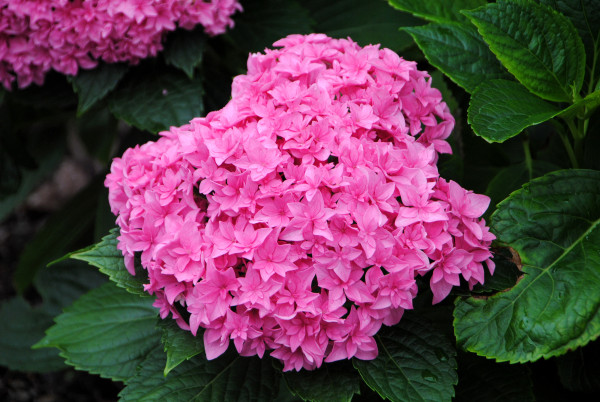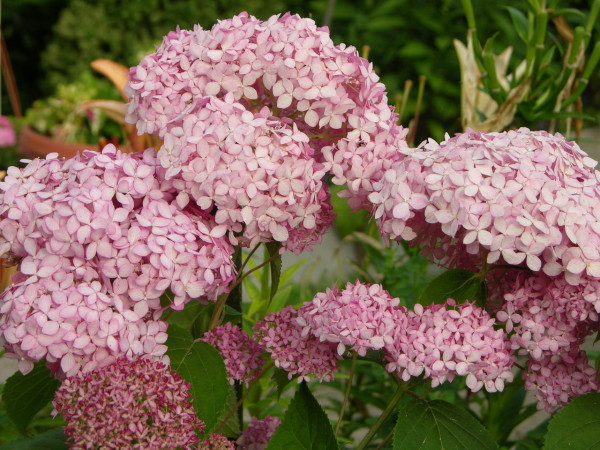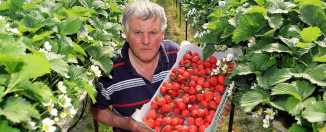Hydrangea: planting and care
Many gardeners plant hydrangeas. This shrub begins to bloom in mid-summer, almost completely covered with large inflorescences. The homeland of hydrangea is the subtropics. There it can grow up to 4 meters in height, but in our latitudes its size is limited to a small bush.
Content
Planting hydrangeas
Hydrangeas are planted in the spring. Since the plant will be in a certain area for several years, the soil must be thoroughly fertilize... To do this, organic matter and mineral fertilizers are introduced into the hole under the hydrangea. It can be compost or humus. If the soil is too heavy, add sand. Clay is added to light soils. Since the roots of the hydrangea grow strongly over time, make the planting hole large. Add fertilizers to the bottom of the pit and mix them with the soil, then add a layer of soil without fertilizers.
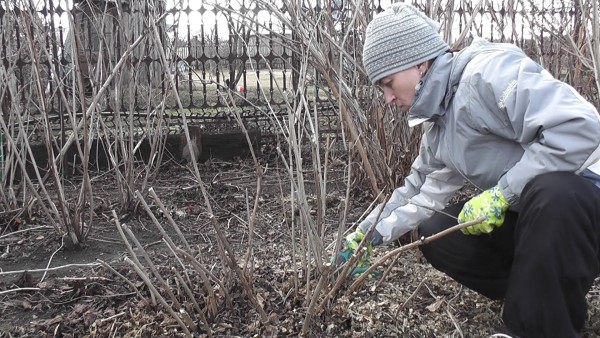 If you plan to make a hedge out of hydrangea, then instead of a hole, make a 1 meter wide trench. Maintain a distance of 2.5 meters between seedlings. Slightly prune the root system of the seedlings. Cut the branches slightly too, leaving a couple of buds on the annual branches. Lower the seedlings into the hole and cover with soil, tamping well. Water the area around the trunk well after planting and mulch with peat or needles and pine bark.
If you plan to make a hedge out of hydrangea, then instead of a hole, make a 1 meter wide trench. Maintain a distance of 2.5 meters between seedlings. Slightly prune the root system of the seedlings. Cut the branches slightly too, leaving a couple of buds on the annual branches. Lower the seedlings into the hole and cover with soil, tamping well. Water the area around the trunk well after planting and mulch with peat or needles and pine bark.
Hydrangea varieties
Out of a large number varieties and types of hydrangea for breeding in our climate are best suited to the following:
- The Annabel variety is a small shrub, up to 1.5 meters high. This variety belongs to the hydrangea tree species. The crown of this hydrangea can grow up to three meters. The large and succulent leaves of this shrub never change their color. The inflorescences of this hydrangea variety are white.
- The Grandiflora variety is an extensive bush covered with cream flowers. It begins to bloom in June and ends in October.
- The variety of hydrangea paniculata Kiushu has a very unusual crown structure in the form of a fan. This variety tolerates frost well. Its inflorescences of a white shade do not fall until mid-October.
- Variety Symphony of Color has the ability to change the color of flowers from cream to dark red during flowering. Duration of flowering from July to October.
Hydrangea: photo
Planting hydrangeas outdoors
Although it is customary to plant a hydrangea in the spring, many gardeners are inclined in favor of planting it in autumn. The reason for this is simple - the plant begins to bloom the very next summer. The disembarkation time depends entirely on the climatic conditions. So in the southern regions, you can plant hydrangea at the end of October, while in the north it is better to plant seedlings earlier.
If you planted hydrangea seedlings in the fall, be sure to cover them for winter to protect them from frost. It is better to do this a month before the first frost. Usually hydrangea does not require abundant watering. She has enough moisture that she receives from the rain. Recommended multiple times to water planting with a weak solution of potassium permanganate to prevent the formation of mold.
Hydrangea home: care
This beautiful flower can also be grown as a home plant, not just on a plot in the garden. For home hydrangea, wide pots should be chosen, since the root system of this flower grows in breadth. At the same time, keep in mind that it is necessary annually transplant plant, picking up a bigger pot.
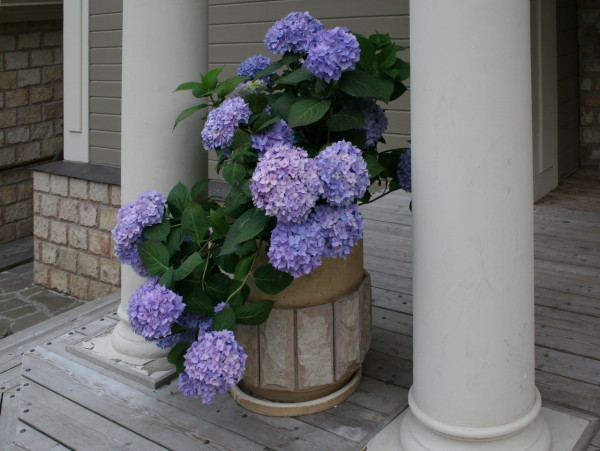 Lay a drainage layer on the bottom of the flowerpot and move the flower into it by the transfer method, pouring fresh soil mixture along the edges. After finishing planting, moisten the soil and lay a layer of peat mulch. The home hydrangea prefers a lighted area, but without direct sunlight. Such a flower is afraid of drafts and a sharp change in air temperature.
Lay a drainage layer on the bottom of the flowerpot and move the flower into it by the transfer method, pouring fresh soil mixture along the edges. After finishing planting, moisten the soil and lay a layer of peat mulch. The home hydrangea prefers a lighted area, but without direct sunlight. Such a flower is afraid of drafts and a sharp change in air temperature.
Water the hydrangea daily and a lot during the summer. Reduce watering in spring and autumn, and in winter, only moisten the soil as needed. During active growth, apply fertilizer twice a month, intended for flowering plant specimens.
Hydrangea transplant
Since the soil under the hydrangea is rapidly depleting, it must be replanted every four years. To do this, in a new place, holes are dug 60 cm deep, observing a gap between them of 1.5 meters.
Top dressing from urea, superphosphate, potassium sulfate and organic matter is added to the pit. This will avoid adding fertilizer for the next two seasons. In subsequent years, it is necessary to regularly feed the hydrangea during the active growing season. The first time feeding is done in the spring, when the bush begins to grow. The second feeding should be done during bud formation. Further fertilizing is carried out in the summer months.
Propagation of hydrangea
Usually, hydrangea is propagated by dividing the bush, cuttings or seeds. The hydrangea bush can be split in both spring and fall. To do this, it is dug up and divided into three parts. In this case, it is important to ensure that several buds remain in each part, from which new shoots will appear.
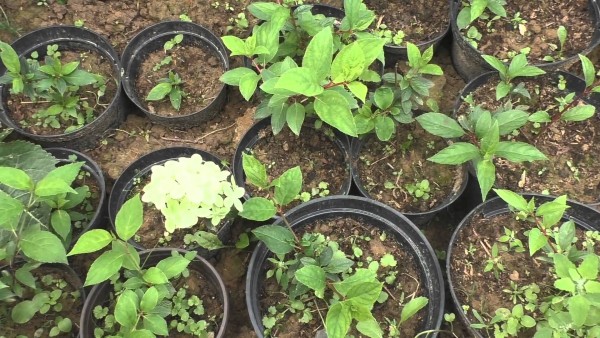 The most commonly used method of propagation by cuttings. This method is straightforward and most effective. Cuttings are harvested from annual shoots. Then they are simply placed in a moist soil of sand and peat, sticking to a depth of three centimeters. Maintain a distance of 5 centimeters between the cuttings. Cover the cuttings with foil on top and periodically moisten the soil. After 3 weeks, the film is removed. In spring, rooted cuttings are planted in open ground.
The most commonly used method of propagation by cuttings. This method is straightforward and most effective. Cuttings are harvested from annual shoots. Then they are simply placed in a moist soil of sand and peat, sticking to a depth of three centimeters. Maintain a distance of 5 centimeters between the cuttings. Cover the cuttings with foil on top and periodically moisten the soil. After 3 weeks, the film is removed. In spring, rooted cuttings are planted in open ground.
